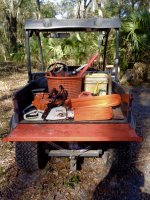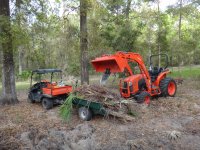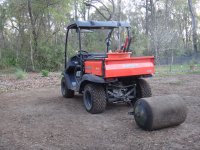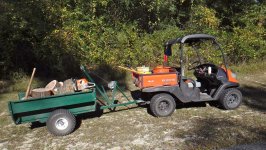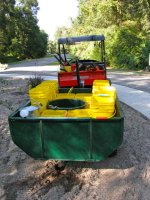mainenate
New member
I know there are a lot of these threads! Thanks in advance for the advice.
Buying 80 acres of woods, about half of it logged with some slash on the ground.
Short term needs (next 4-5 years)
Long term needs:
I've used a Kubota L3940 for a number of years when my dad owned one. That was great for woods work (chipper, logging winch) and road work. It was heavy and destructive for work around the house though, as it tore up yards and even the gravel driveway (w/Ag tires). I'm thinking a 30-34hp with Back Hoe would have a smaller footprint, and make a better match for the long-term jobs.
My questions are, how big would you go? And how much of the short term needs would you try to meet with the tractor, versus contract out or rental?
I suspect a chipper (4-6" power feed) is the job that will determine minimum chipper size. Though for $6000+ purchase price I wonder if renting a big tow-behind chipper a bunch of days would make more sense.
Local dealers include LS, Kiota, Kubota, JD, MF. The only brand I have any experience with is Kubota. Specific suggestions welcome.
Thanks!
Buying 80 acres of woods, about half of it logged with some slash on the ground.
Short term needs (next 4-5 years)
- Clean up limbs/slash around building site (2-3 acres) and along narrow logging roads (now trails). Prefer chipping over burning for emissions reasons, and because of limited burning windows around here.
- Improve 3/4 mile gravel road, which has a decent base, but needs shaping, grading, and needs added material in some places. There's gravel on site, so need to move gravel too.
- Possibly skid out some logs, and handle logs for milling (by someone else).
- Build a barn (site prep, slab, handle materials, etc)
- Build a small house (excavate foundation, handle materials, utility trenches, septic, etc)
Long term needs:
- Maintain 3/4 mile road (shaping and grading, occasional building up, but not much of that hopefully)
- Gardening and landscaping
- Maintain woods, deal with limbs and slash, and probably take a few cords of firewood per year out of the woods.
I've used a Kubota L3940 for a number of years when my dad owned one. That was great for woods work (chipper, logging winch) and road work. It was heavy and destructive for work around the house though, as it tore up yards and even the gravel driveway (w/Ag tires). I'm thinking a 30-34hp with Back Hoe would have a smaller footprint, and make a better match for the long-term jobs.
My questions are, how big would you go? And how much of the short term needs would you try to meet with the tractor, versus contract out or rental?
I suspect a chipper (4-6" power feed) is the job that will determine minimum chipper size. Though for $6000+ purchase price I wonder if renting a big tow-behind chipper a bunch of days would make more sense.
Local dealers include LS, Kiota, Kubota, JD, MF. The only brand I have any experience with is Kubota. Specific suggestions welcome.
Thanks!
